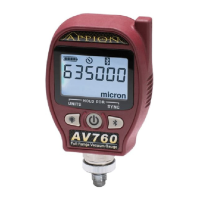FOR REFRIGERANT RECOVERY
OPERATION MANUAL
COPYRIGHT © 2023 - APPION INC. - ALL RIGHTS RESERVED
APPION
TM
AND G1SINGLE
TM
ARE TRADEMARKS OF APPION INC.
⚠WARNING
TO REDUCE THE RISK OF INJURY OR PRODUCT
DAMAGE, READ OPERATION MANUAL PRIOR TO
OPERATING PRODUCT.
For
R
efrige
r
ant
R
e
c
o
v
e
r
y
P
A
R
T
S AND
P
R
OD
U
C
T MADE I
N
TA
I
W
A
N
,
U
S
A
,
E
U
,
S
O
U
T
H
AM
E
RI
C
A
.
PRO
D
U
C
T
DES
I
G
N
,
A
S
S
EM
B
L
Y
T
E
S
TIN
G
AN
D
Q
U
AL
I
T
Y
A
S
S
URAN
C
E
IN DENVER,
C
OL
O
R
AD
O
.
P
A
TENT PENDING
SERIA
L
NUMBER
www.AppionTools.com
This unit is not rated for Explosive Environments. Do NOT use with hydrocarbons. See page 4.
It is designed to recover Class A1 and A2L refrigerants in normal or standard environments.
⚠DANGER



